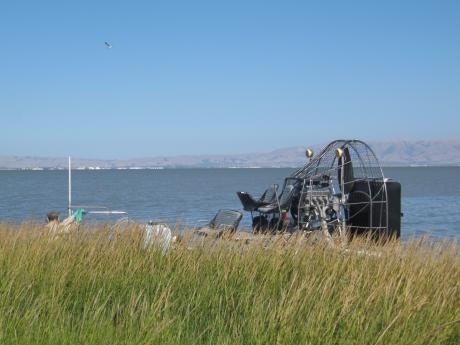Invasive Spartina (cordgrass) Project

The District is currently assisting the California Coastal Conservancy on the San Francisco Estuary Invasive Spartina Project. This project seeks to eradicate an invasive species of cordgrass (Spartina alterniflora) that threatens native habitats throughout the San Francisco Bay. The US Fish and Wildlife, California Dept of Fish and Game, Bay Area Regional Water Quality Control Board, Environmental Protection Agency, Baykeeper, University of California, Sierra Club, and Audubon Society participated in developing the environmental review documents to eradicate invasive Spartina.
The spread of non-native cordgrass has been a concern in tidal areas of San Francisco Bay since the early 1970s. Invasive Spartina spreads further onto pickleweed marshes and into tidal mudflats in comparison to native cordgrass. Their spread reduces essential habitats used by migratory birds and other endangered species. Stalks of invasive Spartina are also taller and thicker than the native cordgrass. Furthermore, their growth and spread has begun to clog local marinas and flood control channels. Without eradication efforts to control its spread, San Francisco Bay is at risk of being dominated by this weed within 20 years.
The District controls invasive Spartina along the shores of San Francisco Bay with Imazapyr, an herbicide. This material interferes with the function of an enzyme found only in plants and therefore has no effect on animals, fish, or birds. The material is applied directly to the leaves of the plant during low tide. This material rapidly degrades via photolysis and dissipates from water within several days and has no impact on water quality. This material has been approved for application to tidal wetlands by the Environmental Protection Agency.
Page last reviewed: June 10, 2021
